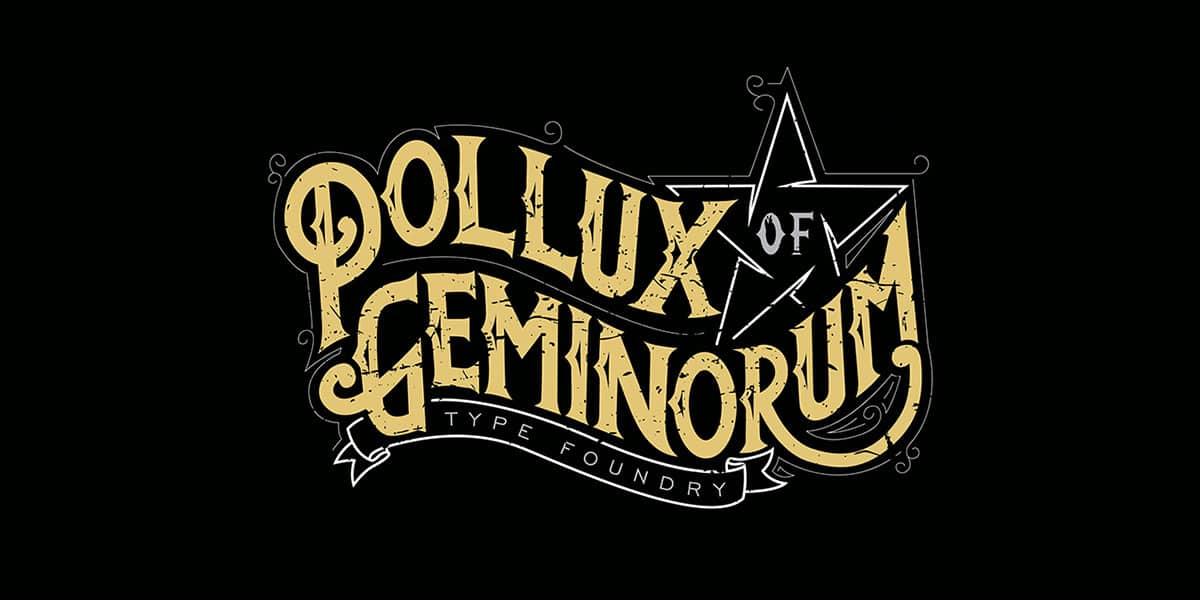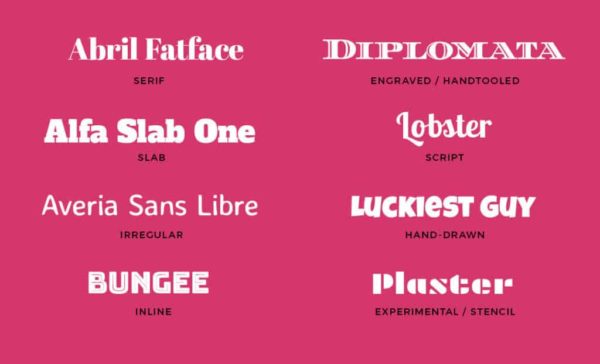
You can use a display font to help any formal or informal design project. This font has its uniqueness, individuality, and expressiveness—not to mention its large size uses and daring personalities.
Display typefaces are sometimes diverse and un-unified in forms, along with the boldness, making them inappropriate for body copy or running text.

What is a display font?
A prominent English type designer, Walter Tracy, once described it as text that if you enlarge it, you can use for headings; however, if you reduce it, you cannot use it for text setting.
Display fonts are typefaces that aim at larger sizes of use, for example, headings, rather than a body of text in extended passages.
Thank you for reading this post, don't forget to subscribe!
They have eccentric appeal due to their original heritage, taking inspiration from other lettering varieties, such as calligraphy and handcrafted signs. They gain popularity during the making of the initial poster design.
Display fonts offer uniqueness and variable designs, along with individual and prominent forms, allowing them to attract readers or audiences and create a certain feeling or mood.
You can see these typefaces, for example, in custom logos and attractively laid-out editorial coverage.

Since display font comes in various styles and shapes, check out the following things to consider—by experts in this field—before properly and beneficially using it.
The key is flexible as display typefaces are widely in range, such as hand-drawn, ultra-bold, ultra-light, in-lined, right-through, distressed, and many more.
It is one of the essential tips on how to use display font. How well can you or others read this font at certain (intended) sizes and distances?
The use of this typeface should be suitable with the content and context, without sacrificing creativity. The challenges will be making it original, appealing, dramatic, and thrilling.
You can use a display font to form various characters, such as giving your design an emotional feel, bold, playful, or sexy. Each font has its own personality, very much like a human. In this case, display fonts are somewhat more extroverted.
You can do trial-and-error or make something different with this heading typeface. For instance, you can pick other similar fonts for particular (different) uses or designs.
What are the text display potentials you can use display font for? You can opt for the ultra-thin or ultra-bold typeface versions highly appropriate for large-size headline designs.
You can do researches and find the styles as your inspiration. Consider making illustrations rather than typesetting. If you find the font that you want, you can make it yourself.
Originally more recognized in print, display fonts have become widely prevalent online after the invention of web fonts. You can find display typefaces in many large-scale works to deliver a particular feel.
As previously stated, a display font sometimes tends to be structurally intricate thus hard to read. Therefore, if you want to use it as a heading, you should check it yourself to ensure that the font and the design are easily readable. Also, if you need more inspiration, you can browse through various online sources.